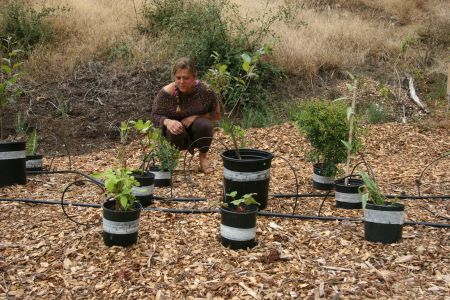
| |
| Home |
| Research |
| Publications |
| People |
| Teaching |
| Prospective Students |
| Links |
 |
Julie Hopper Graduate Student (510) 643 5903 juliehopper@berkeley.edu |
||||||||||||
|
My research interests include biological control, global change biology, insect ecology, aquaculture, marine biology, multitrophic interactions and parasitology. Long-Term Research Goals 1) To restore aquatic and terrestrial ecosystems undergoing species invasions or anthropogenically induced community changes. 2) To utilize biological control as a tool to control invasive species below ecological and economic thresholds. Dissertation Research Species invasions, range expansions, and fluctuations in abundance, are some of the consequences and causes of environmental change. My dissertation examines why many invasive species increase in abundance and have substantial negative impacts in their new region while other invasive species decline and lack significant negative impacts. Contrary to the trend for most invasive species, the exotic light brown apple moth, Epiphyas postvittana, has been in decline since its initial spread in California in 2007. My work focuses on the multitrophic interactions and resident enemies involved in the decline of this moth in California and provides a unique opportunity to use this knowledge to inform control efforts for other invasive or nuisance species. Objectives: 1) Estimate the degree of variation in parasitism by parasitoid wasps of egg and larval stages of the light brown apple moth on different host plant species in the field and the laboratory. 2) Characterize the novel microsporidian pathogen, Nosema fumiferanae postvittana and its pathology in the light brown apple moth 3) Determine the occurrence and load of N. fumiferanae postvittana in field populations of the light brown apple moth using qPCR. 4) Investigate the role of host plant nutritional quality and infection by N. fumiferanae on the life history consequences of the light brown apple moth.
PUBLICATIONS Hopper, J.V., Huang W-F, Solter L.F., Mills N.J. (In Press). Pathogenicity, morphology, and characterization of a Nosema fumiferanae isolate (Microsporidia: Nosematidae) from the light brown apple moth, Epiphyas postvittana (Lepidoptera: Tortricidae) in California. Journal of Invertebrate Pathology. Hopper, J.V. and Mills N.J. (In Press). Pathogenicity, prevalence and intensity of a microsporidian infection by Nosema fumiferanae postvittana in the light brown apple moth, Epiphyas postvittana, in California. Journal of Invertebrate Pathology. Hopper J.V. and Mills N.J. 2015. Consequences of infanticide for a gregarious ectoparasitoid of leafroller larvae. Ecological Entomology 40: 461-470. Hopper J.V., Kuris A.M., White C., Lorda J., Koch S.E., Hechinger R.F. 2014. Reduced parasite diversity and abundance in a marine whelk in its expanded geographic range. J. Biogeography 41, 1674-1684. Hopper J.V., Nelson E.H., Daane K.M., Mills N.J. (2011). Growth, development and consumption by four syrphid species associated with the lettuce aphid, Nasonovia ribisnigri, in California. Biological Control 58 (3) 271-276 Hopper J.V., Poulin R., Thieltges D.W. (2008). Buffering role of the intertidal anemone Anthopleura aureoradiata in cercarial transmission from snails to crabs. Journal of Experimental Marine Biology and Ecology 367, 153-156 For my full CV click here (pdf)
| |
| Department of Environmental Science, Policy and Management Copyright © 2012 UC Regents - last modified 01/3/2016
|
|
|
|
| | |||||

